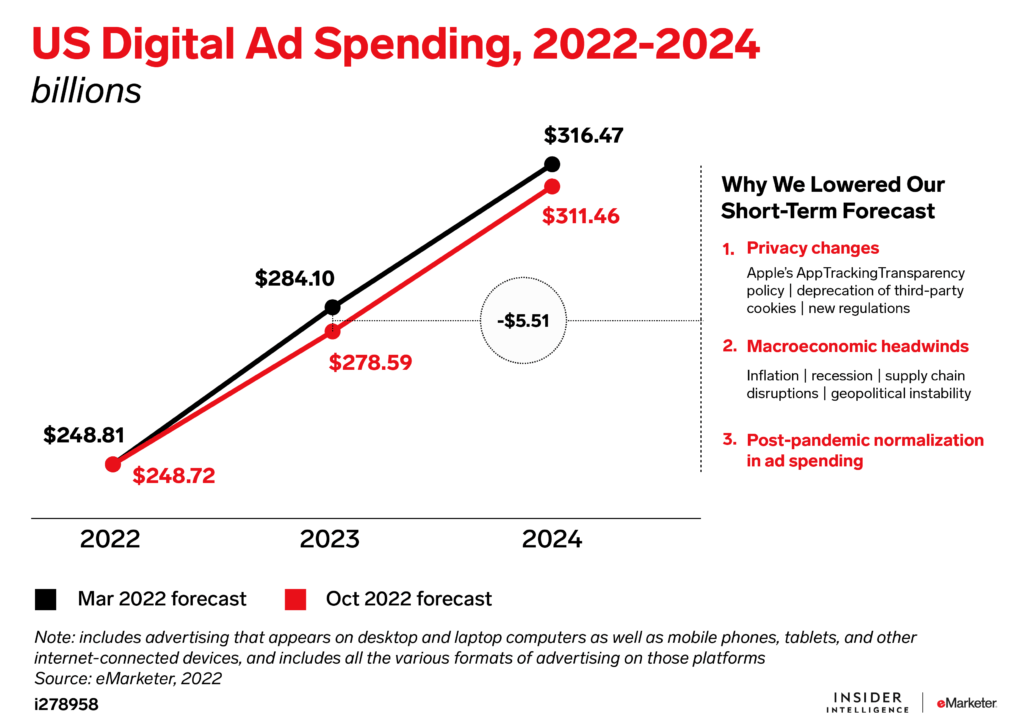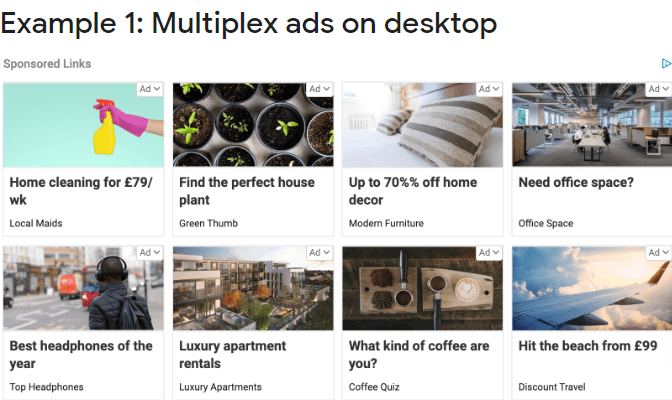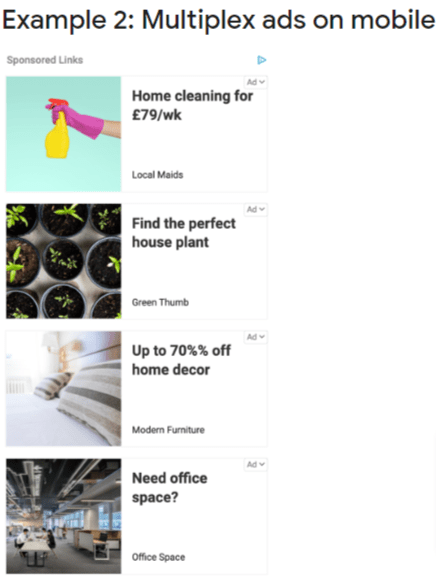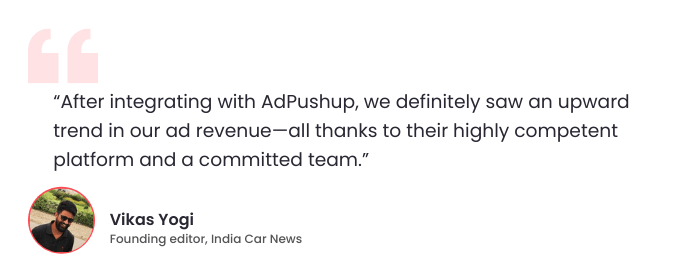Learn how multiplex ads can provide a more engaging and interactive experience for viewers and be a valuable revenue stream for publishers.
Multiplex ads can be a powerful tool for revenue generation, as they allow advertisers to showcase multiple products or services in a single ad unit. By featuring a variety of offerings, multiplex ads can help increase brand awareness and drive sales.
Here are some tips for using multiplex ads for revenue generation:
- Highlight best-selling products or services
- Use engaging visuals and copy
- Target specific audiences
- Include calls-to-action
- Measure results
Social media platforms such as Facebook, Instagram, and Twitter have introduced multiplex ad formats to help advertisers showcase multiple products or services in a single ad unit.

The most exciting thing is that these ad formats typically feature a carousel of images or videos that viewers can swipe through, allowing advertisers to showcase a variety of offerings in a single ad. This can help increase engagement and drive more clicks and conversions.
Read ahead to know what Multiplex ads are, how they can add value to publishers’ inventory, how to get started with them, and best practices for their implementation.
Also Check: Top Performing Banner Ad Sizes in 2023
What are Multiplex Ads?
Let’s start with multiplex ads definition. Multiplex ads are a type of native ad formats, much like content recommendation ads. Publishers can leverage them to serve ads that blend seamlessly with the content on their website.
Content recommendation ads generally get a space below the content space. But, with Google Multiplex Ads, publishers can experiment with sponsored content ads without worrying about the user experience.
According to Google, multiplex ads ensure brand safety and enable publishers to serve content recommendation ads through Ad Manager.
Furthermore, multiplex ads offer readers more content that’s relevant to them, potentially increasing page views, the time spent on website, reader loyalty, impressions, and ultimately ad revenue. (Source: Google Ad Manager)
Publishers can either ‘let Google optimize layout’ or choose layouts according to their preferences.


While Google also recommends choosing the same option in all cases, it does have different layout options:
- Multi column (landscape image) for desktops layouts
- Single column (square image) for rail or mobile placements
- Single column (landscape image) for rail or mobile placements
Google recommends that publishers use the ‘let Google optimize layout’ option when they are targeting multiple placements within a single style.
Why Publishers are Turning to Multiplex Ads?
Since these ads are offered by Google, publishers can be sure of the fact that no low quality ad will be served on their websites, thanks to strict Google policies to maintain ad quality. Multiplex ads can provide several benefits for publishers, including:
- By featuring multiple products or services in a single ad unit, multiplex ads can help increase engagement and generate more clicks and conversions. This can result in higher revenue for publishers who display these ads on their platforms.
- These ad layouts blend in with the content of the website, on top of which, these ads appear at the bottom of the page, thereby retaining good user experience.
- Leveraging a new ad format is always a good way to tackle banner blindness, which is exactly what Multiplex ads will do for publishers’ inventory.
- Because these ads are offered by Google, no restrictive contracts are involved.
- Google has the largest pool of ad buyers, so publishers don’t need to worry about the blank impressions problem.
- Multiplex ads can be customized to fit the look and feel of the publisher’s platform, allowing them to seamlessly integrate with the rest of the content.
What to Check for Multiplex Ads?
At the end of the day, these ads are fairly new and can be subject to some drawbacks. And because of the novelty of these ads, it’s hard to say at the moment what those drawbacks exactly will be.
For starters, if you are already working with a content recommendation platform, your contract may restrict you from leveraging Multiplex ads.
At this point, we can only advise publishers to ensure that they won’t be breaching any agreements by using these ads and, of course, to follow the best practices listed below for proper implementation of these ads.
Read More: 7 Best Examples of Native Ads You Ever Wanted to Know

Best Practices to Integrate Multiplex Ads
Consider User Intent
This is something that goes for advertising in general. But it’s worth stipulating again that you have to ensure that user intent is at the center of your ad monetization strategy. At the present time, relevant ads are highly significant in the ad tech industry.
So, make sure that your Multiplex ads have relevant content for the different types of users that visit your site.
Understand your Audience
While this point may seem similar to the previous point, we advise that you consider this as more of an extension of the latter. How will you get to creating an ad monetization strategy that puts the user at the center?
By ensuring that you know your audience. All forms of native advertising, including Multiplex ads, work best when you show your visitor targeted ads.
A/B Test your Ads
Again, as it goes other ad formats, it is important to A/B test Multiplex ad formats. As a publisher, you will have to see if your new ad placement is working out or not.
Or if a different ad layout will work better than the one that you have implemented. Revenue optimization depends heavily on A/B testing, so naturally, you have to do the same while implementing Multiplex ads as well.
How to Get Started with Multiplex Ads?
The setup process for Multiplex ads is easy and simple. It is similar to the process of setting up native ads in Google Ad Manager.
(Note: All multiplex ads types use the fluid size.)
Let’s check out the steps of setting up multiplex ads in Google Ad Manager.
Step 1: Sign in to the Google Ad Manager homepage,
Click Delivery> Native> New native ad;
Select Multiplex Ad from the drop-down menu.
Step 2: Check the ad setting which is by default done by Google.
Google selects the best ad layout and ad styles for multiplex ads for both desktop and mobile devices.
Step 3: The ad customization is also possible.
Disable the option ‘Allow Google to upgrade layout’;
Select a layout and the number of rows and columns for the ads, as shown below:
- Single column for mobile or rail placement (landscape image).
- Single column for mobile or rail placement (square image).
- Multi-column for desktop only (landscape image).
Step 4: Set up the criteria for Multiplex ads targeting accordingly
Click on Save and Activate
The targeting criteria should be based on the line item’s targeting.
Finally, save and activate.
Now your website is ready for displaying Multiplex ads.

Wrapping Up
It is highly recommended to consider all the features of Multiplex ads before you implement them. Make sure you follow best practices for making the most out of these ads.
Whether or not multiplex ads are the best revenue uplift for publishers can depend on a variety of factors, including the type of content on the publisher’s platform, the audience demographics, and the publisher’s goals.
Overall, multiplex ads can be an effective revenue uplift strategy for publishers, but it’s important to consider the unique needs of the publisher’s platform and audience when deciding on the best advertising strategy.
Multiplex ads can be a great addition to your inventory and can fetch you higher ad revenue. If you are not yet working with a GCPP, make sure to book a demo with us soon, and we’ll walk you through everything related to Multiplex ads and much more. Start here.
FAQs
If you want to automatically display multiplex ads on your site, you have two options: create native ad units and place the ad code manually or enable multiplex ads in auto ads.
All Google AdSense publishers are eligible without any separate criteria.
Using multiplexing, networks can convert multiple signals — digital or analog — into a single composite signal that is transmitted over a common medium, such as a fiber optic cable or radio wave.

Shubham is a digital marketer with rich experience working in the advertisement technology industry. He has vast experience in the programmatic industry, driving business strategy and scaling functions including but not limited to growth and marketing, Operations, process optimization, and Sales.









1 Comment
Very very useful information about for multiplex ads. I want to use in my website Global health tricks
Thanks